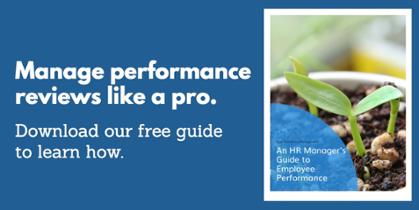
Monitoring employee engagement should be part of any productive organization. Not only do engaged employees produce better results, but they’re also less likely to leave your organization in the near future or create negative energy after moving on. High employee turnover costs organizations steeply, financially and in terms of employee morale. That’s why taking the time to monitor engagement and make positive changes in your workplace is a worthwhile investment.
A popular method for monitoring employee engagement and satisfaction is an employee engagement survey. The traditional process used by many organizations— sending out a few questions once or twice a year—may not be doing much to help. According to HR expert Josh Bersin, “It is not detailed enough, it isn’t real-time, and it doesn’t consider all the work related issues which drive employee commitment.” Additionally, many organizations equate employee satisfaction with engagement and send out one annual survey to measure both. This is a mistake, though; plenty of unengaged employees are quite satisfied with their arrangement, and would be content to continue getting paid to do very little work for many years.
However, if they’re used intelligently, employee engagement surveys can be a great tool to diagnose broad workplace trends that need to be fixed. Regularly keeping an eye on how employees feel about management styles, policies, workloads, and other issues can help leadership make improvements before the company starts to lose employees.
To make employee engagement surveys work, they should be:
Anonymous. If employees feel there is any way they can be identified based on their responses, they’ll be far less likely to give their honest evaluations of leadership and corporate culture. Make sure the survey doesn’t ask employees to identify their role or department.
Frequent. Once a year is likely not often enough to be useful. According to HRZone, “Organizations that survey their employees more frequently report higher levels of satisfaction– those with a system for continuous feedback, alongside those conducting an employee survey more than once a year, are most satisfied with their engagement efforts.” If continuous feedback loops won’t work in your workplace, aim to survey employees at least quarterly.
Customized. It’s wise to adapt your questions based on feedback from previous surveys, conversations, office culture and corporate goals. Vary the wording or the specific questions within broad categories to help get a full picture of employee concerns.
Short. This should not be an onerous task that employees dread, especially if they’re expected to participate fairly often. Aim for 20 questions or fewer.
Here are some categories of questions an employee engagement surveys should include, along with sample questions to use:
General workplace satisfaction
- Hypothetically, if you were to quit tomorrow, what would your reason be?
- On a scale of 1-10:
- How satisfied are you with your role generally?
- How satisfied are you with your work-life balance?
- Strongly agree to strongly disagree:
- I would apply for this same job again.
- I would refer someone to work here.
- I foresee myself working here a year from now.
- I have the appropriate training and resources to be successful in my role.
- I feel empowered to make appropriate decisions when necessary.
Individual growth and development
- Strongly agree to strongly disagree:
- I believe I’ll be able to reach my full potential here.
- I am inspired to meet my goals at work.
- I am excited to go to work every day.
- I am determined to do my best work every day.
- I get so involved in my work that the day goes by quickly.
- My job is important to helping my company reach its goals.
- This job experience will help me reach my personal career goals.
Organizational culture
- What three words would you use to describe our culture? (Optional: provide a list of words, along with a blank field for employees to give their own responses.)
- Strongly agree to strongly disagree:
- My coworkers proactively identify challenges and opportunities.
- Employees in my organization willingly take on new tasks as needed.
- I feel supported by my coworkers and supervisors to do my job well.
- When something unexpected comes up, I know who I can ask for help.
- Our organization fosters teamwork and cooperation.
- Our company has a culture in which I can thrive.
- I have fun at work.
- I feel valued here.
- I understand and believe in our company’s mission.
Leadership
- How frequently do you receive recognition from your manager?
- Strongly agree to strongly disagree:
- Leadership takes my feedback seriously.
- Management is transparent.
- I feel comfortable giving my supervisor feedback.
- I received recognition the last time I accomplished a big project.
- Leadership actively contributes to a positive work culture.
- There is open and honest communication between managers and employees.
- I am given adequate feedback to improve my work.
Remember that an employee engagement survey is not an engagement tactic on its own. It’s merely a tool to help you understand trends in your employees’ feelings of pride, satisfaction, and engagement in their work. Staff will feel heard only as long as their feedback is taken into consideration and changes are made. A survey should just be the first step in an ongoing process of improving the workplace experience at your company.
Resources:

